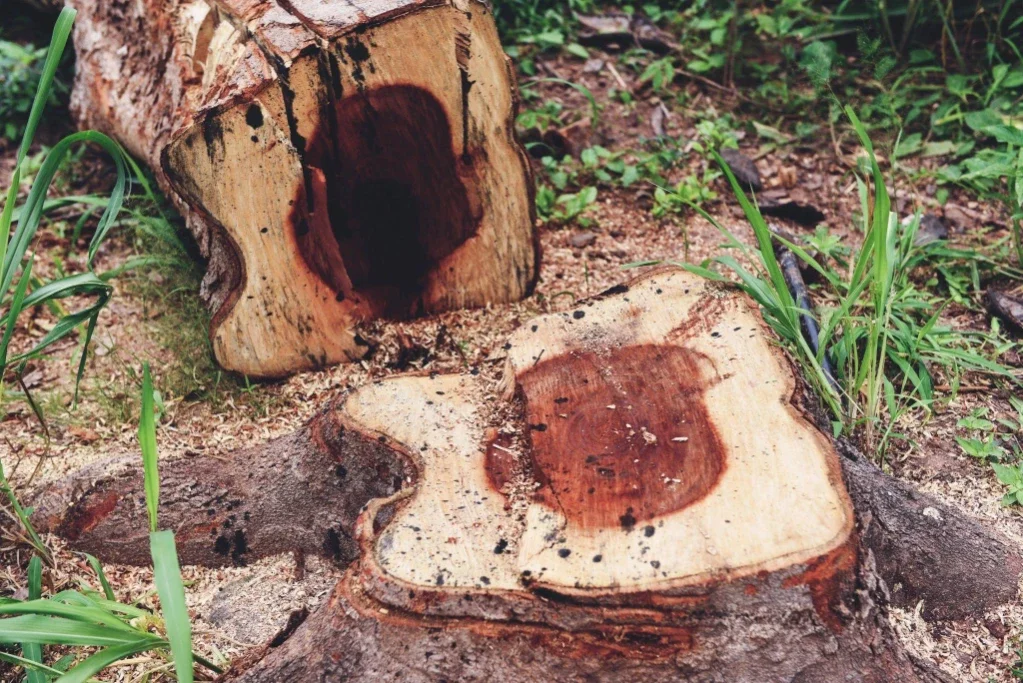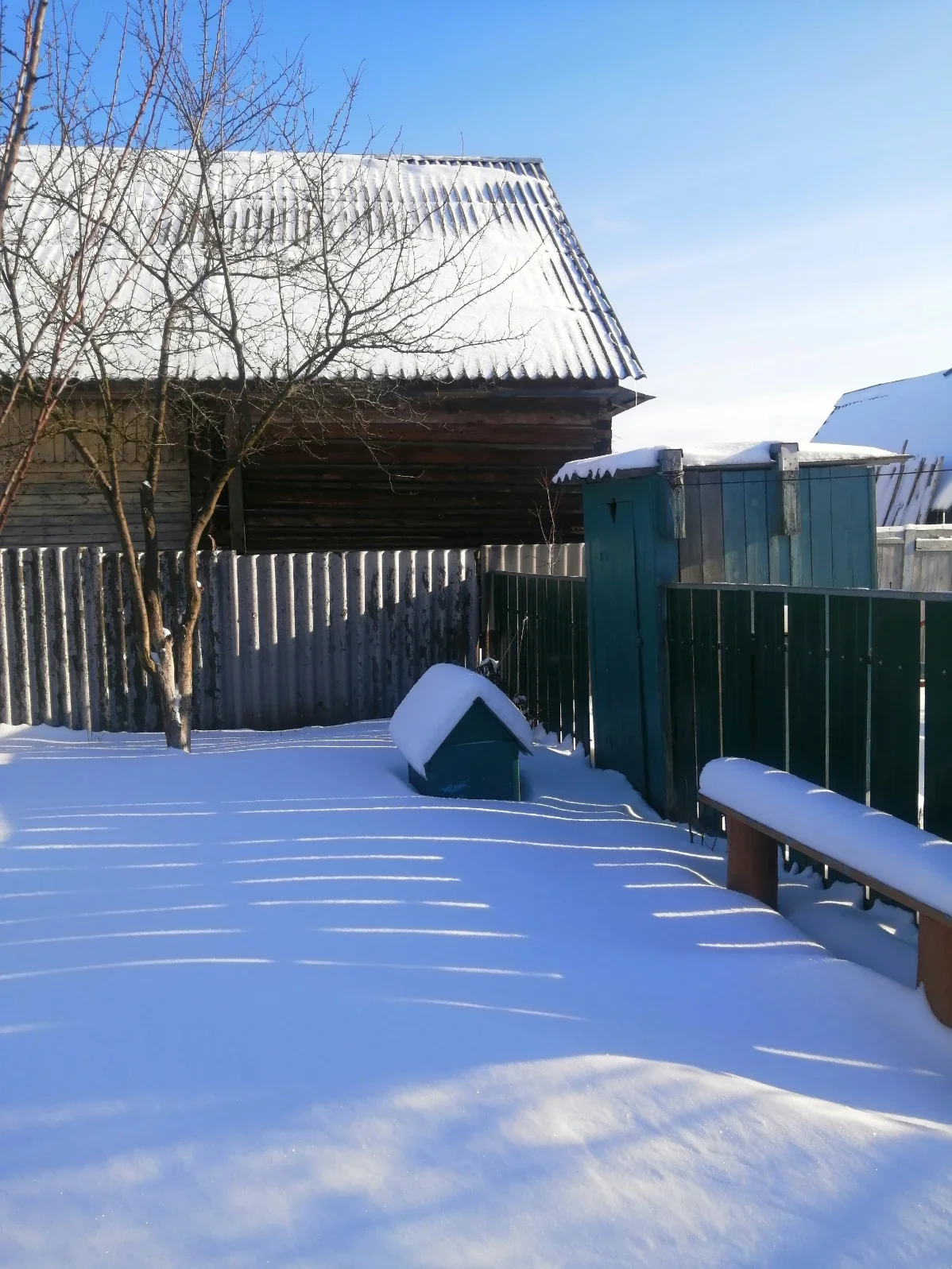Quackgrass: Identification and Control Tips
Learn how to identify and control quackgrass in your lawn and garden. Our guide, "Quackgrass: Identification and Control Tips," provides expert advice for managing this invasive weed effectively.
Quackgrass—if you’re dealing with this invasive weed, you know it’s no laughing matter. This tough, perennial grass can take over your lawn, garden, or field faster than you can say “quack.” Its robust underground rhizomes make it particularly challenging to eradicate once it’s taken hold. But fear not! In this article, we’ll dive into Quackgrass: Identification and Control Tips, helping you recognize this pesky plant and arm you with strategies to keep it in check. Whether you’re a seasoned gardener or a weekend warrior, understanding how to manage quackgrass is key to maintaining a healthy, beautiful landscape.
What is Quackgrass?
Characteristics and Growth Habits
Before you can control quackgrass, you need to know what you’re up against.
Scientific Name
Botanical Identification:
Scientific Classification: Quackgrass is scientifically known as Elymus repens. This perennial grass is a member of the Poaceae family and is commonly found in temperate regions worldwide.
Alternative Names: It's also known by other names, such as couch grass, twitch grass, and dog grass, depending on the region and local terminology.
Appearance
Physical Description:
Leaf Structure: Quackgrass features flat, rough-textured leaves that are typically blue-green in color. The leaves can grow up to 12 inches long and are characterized by their rough, hairy surfaces. The leaf blades are often broad and can have a slightly wavy margin.
Growth Habit: This grass can grow up to 3 feet tall, forming dense mats that can crowd out other vegetation. It often appears as a coarse, robust plant that can be easily identified by its upright growth habit and distinct leaf texture.
Rhizomes
Underground Spread:
Rhizome Characteristics: One of the most distinctive features of quackgrass is its rhizomes, which are underground stems that spread horizontally. These rhizomes are white, wiry, and can grow several feet in length, enabling the plant to spread rapidly across an area.
Propagation Method: The rhizomes allow quackgrass to propagate vegetatively, making it particularly challenging to control. Each segment of the rhizome can develop into a new plant, making it essential to remove as much of the root system as possible during control efforts.
Survival and Resilience: The extensive rhizome network helps the grass survive adverse conditions, including drought and soil disturbance, making it a resilient and persistent weed in gardens, lawns, and agricultural fields.
Seed Heads
Reproductive Features:
Seed Head Structure: Quackgrass produces spike-like seed heads that can reach up to 8 inches in length. These seed heads contain numerous small, yellowish seeds that are dispersed by wind, water, or human activity.
Seed Dispersal: The seeds can further spread the plant if left unchecked, contributing to its invasive nature. Each seed head can produce hundreds of seeds, which can germinate and establish new plants under favorable conditions.
Seasonal Growth: The seed heads typically appear in late spring to early summer, and the seeds can remain viable in the soil for several years, complicating eradication efforts.
Understanding the characteristics and growth habits of quackgrass (Elymus repens) is essential for effective identification and management. Its robust growth, extensive rhizome network, and prolific seed production make it a challenging weed to control. However, recognizing these features can help in developing targeted strategies for its removal and preventing its spread in gardens, lawns, and agricultural areas.
Why is Quackgrass a Problem?
Invasive Nature
Quackgrass is notorious for being invasive and difficult to control.
Rapid Spread
Rhizome-Driven Proliferation:
Horizontal Growth: Quackgrass (Elymus repens) is notorious for its ability to spread rapidly through its rhizomes. These underground stems can extend several feet in all directions, allowing the plant to quickly colonize new areas. This aggressive spread can overwhelm other plants, leading to a significant reduction in plant diversity.
Competitive Edge: The extensive rhizome network enables quackgrass to outcompete other plants for essential resources such as nutrients, water, and light. As it spreads, it can form dense mats that suppress the growth of neighboring plants, creating a monoculture. This not only reduces biodiversity but can also negatively impact the soil ecosystem by altering nutrient cycling and soil structure.
Resilience
Adaptability to Diverse Conditions:
Versatile Growth: One of the reasons quackgrass is such a formidable adversary is its resilience and adaptability. It can thrive in a wide range of soil types, from sandy soils to heavy clays. This adaptability allows it to establish in various environmental conditions, from well-drained to poorly drained sites.
Environmental Tolerance: Quackgrass is also tolerant of different environmental conditions, including temperature fluctuations and varying moisture levels. It can survive drought conditions due to its deep root system and can also tolerate waterlogged soils, making it difficult to control in both dry and wet climates.
Persistent Weed: The plant's resilience is further demonstrated by its ability to regenerate from small rhizome fragments. Even if the above-ground parts are removed, the underground rhizomes can sprout new shoots, making it challenging to eradicate completely.
Managing quackgrass requires a comprehensive approach that addresses both its rapid spread through rhizomes and its resilience to various environmental conditions. Understanding these challenges is crucial for developing effective strategies to control and prevent the spread of this invasive species in gardens, fields, and natural landscapes. Whether through mechanical removal, chemical control, or cultural practices, consistent and persistent efforts are necessary to manage quackgrass effectively.
Impact on Gardens and Crops
This weed isn’t just a nuisance; it can also impact the health of your garden or crops.
Nutrient Competition
Resource Competition:
Water and Light: Quackgrass (Elymus repens) is a highly competitive plant, aggressively vying for water, light, and nutrients. Its rapid growth and extensive root system allow it to absorb water and nutrients more efficiently than many other plants. This competition can deprive neighboring plants of the essential resources they need to thrive, leading to stunted growth and poor health.
Nutrient Uptake: The dense root network of quackgrass can effectively monopolize soil nutrients, including nitrogen, phosphorus, and potassium. These nutrients are critical for plant growth, and their depletion can severely impact the growth and development of other plants in the area. The resulting nutrient competition can weaken native vegetation and cultivated crops, making them more susceptible to diseases and pests.
Interference with Crops
Agricultural Challenges:
Reduced Crop Yields: In agricultural settings, quackgrass can significantly reduce crop yields. Its aggressive growth can crowd out crops, reducing the space available for planting and limiting the access of crops to sunlight and nutrients. The competition for resources can result in smaller, less vigorous plants, leading to lower yields and reduced quality of produce.
Interference with Planting and Harvesting: Quackgrass can interfere with agricultural practices, complicating planting and harvesting processes. Its thick, intertwined root system can make soil preparation more difficult, hindering the planting of crops. During harvest, the presence of quackgrass can clog machinery and contaminate crop yields, requiring additional labor and effort to remove the unwanted grass.
Economic Impact: The presence of quackgrass in agricultural fields can lead to increased costs for farmers. These costs include additional labor for manual removal, increased herbicide use, and potential losses from reduced crop quality and yield. In some cases, quackgrass infestation can also necessitate more frequent crop rotations or fallowing fields to control its spread, further impacting farm productivity and profitability.
The impact of quackgrass on both natural ecosystems and agricultural systems underscores the importance of effective management strategies. Its ability to outcompete other plants for essential resources and interfere with agricultural operations makes it a significant concern for gardeners and farmers alike. Addressing these challenges requires a multifaceted approach, including timely mechanical removal, appropriate chemical treatments, and vigilant monitoring to prevent the establishment and spread of this invasive grass.
Quackgrass: Identification and Control Tips
Identifying Quackgrass
Accurate identification is the first step in controlling quackgrass.
Look for the Rhizomes
Distinctive Underground Stems:
White, Wiry Rhizomes: One of the most reliable ways to identify quackgrass (Elymus repens) is by its distinctive rhizomes. These are white, wiry underground stems that spread horizontally beneath the soil surface. The rhizomes are often tough and fibrous, and they can grow several feet in length, forming an extensive network.
Digging and Inspection: To confirm the presence of quackgrass, dig around the base of the suspected plants. If you find these characteristic rhizomes, it's a strong indicator that you're dealing with quackgrass. The presence of these rhizomes is a key feature that distinguishes quackgrass from other grass species that do not spread via rhizomes.
Check the Leaves
Leaf Texture and Structure:
Rough, Slightly Hairy Leaves: Quackgrass leaves are known for their rough texture, which is slightly hairy. The hairs are often more pronounced near the base of the leaf. This roughness is noticeable when you run your fingers along the leaf surface, giving it a coarse feel compared to smoother grasses.
Prominent Midvein: Another distinctive feature of quackgrass leaves is the prominent midvein running down the center of each leaf. This midvein is easily visible and can help in identifying the plant, especially when combined with the rough texture and slight hairiness of the leaves. The leaves are typically blue-green in color and can be up to 12 inches long.
Inspect Seed Heads
Unique Seed Head Structure:
Single Spike Seed Heads: Quackgrass produces seed heads that resemble a single spike, which is a key characteristic to look for. These seed heads are long and narrow, typically measuring up to 8 inches in length. The seeds are arranged in a linear fashion along the spike, giving it a distinctive appearance.
Differentiation from Other Grasses: The seed heads of quackgrass can help differentiate it from other grass species that may have branched or more complex seed heads. The simple, spike-like structure is unique and can be a useful identification feature, especially when the plant is in the flowering or seeding stage.
By using these identification tips—looking for the distinctive rhizomes, checking the rough and hairy leaves with a prominent midvein, and inspecting the unique spike-like seed heads—you can confidently identify quackgrass in your garden, lawn, or agricultural field. Early identification is crucial for managing and controlling this invasive grass, as it allows for timely intervention before the plant has a chance to spread extensively. Whether you're a gardener, farmer, or land manager, understanding these key features will help you address quackgrass infestations effectively.
Cultural Control Methods
Preventing quackgrass from establishing in the first place is key to control.
Healthy Lawn Maintenance
Promoting Lawn Health:
Thick, Healthy Lawn: A dense, well-maintained lawn is one of the best defenses against quackgrass and other weeds. Healthy grass can crowd out weeds, reducing the space and resources available for invasive species to establish themselves. A thick lawn creates a natural barrier that prevents light from reaching weed seeds, inhibiting their germination.
Regular Mowing: Consistent mowing at the appropriate height for your grass type helps maintain a healthy lawn and prevents weeds like quackgrass from setting seed. It's important to avoid cutting the grass too short, as this can stress the lawn and make it more vulnerable to weed invasions. Keeping the lawn at an optimal height also encourages stronger root development, which enhances the lawn's resilience.
Proper Watering: Watering deeply but infrequently encourages the development of deep roots, making your lawn more drought-resistant and less susceptible to weed growth. Overwatering can create ideal conditions for weeds, so it's crucial to water the lawn only when necessary and to avoid shallow, frequent watering.
Fertilization: Regular fertilization provides the nutrients your lawn needs to thrive. A well-fed lawn is more robust and better able to compete with weeds. Use a balanced fertilizer that provides essential nutrients such as nitrogen, phosphorus, and potassium. Be mindful of over-fertilizing, as excess nutrients can also promote weed growth.
Crop Rotation
Disrupting Weed Life Cycles:
Rotating Crops: In agricultural settings, crop rotation is an effective strategy to manage quackgrass and other persistent weeds. By rotating different crops, you can disrupt the life cycle of quackgrass, reducing its ability to establish and spread. Different crops have different planting and harvesting times, which can interfere with the optimal growing conditions for quackgrass.
Break Periods: Including a break period, such as planting a cover crop or leaving the field fallow, can help reduce quackgrass populations. Cover crops can suppress weed growth by providing shade and competing for resources, while a fallow period allows for targeted weed control measures.
Diverse Crop Selection: Selecting a diverse range of crops for rotation can also help manage quackgrass. Some crops may be more effective at outcompeting quackgrass, while others may facilitate specific control measures, such as tillage or herbicide application, that target the weed. The choice of crops should consider the specific needs and conditions of the farm, as well as the characteristics of quackgrass.
Implementing healthy lawn maintenance practices and utilizing crop rotation in agricultural settings are both effective strategies for managing and preventing quackgrass invasions. By maintaining a thick, healthy lawn through regular mowing, proper watering, and fertilization, you can create an environment less conducive to weed growth. In agriculture, rotating crops and introducing break periods can disrupt the life cycle of quackgrass, reducing its spread and impact. Together, these strategies can help keep quackgrass under control and promote the health of your lawn or crops..
Mechanical Control Methods
For those looking to get hands-on, mechanical control methods can be effective.
Hand Pulling
Manual Removal:
Effectiveness for Small Infestations: Hand pulling can be an effective method for controlling small infestations of quackgrass (Elymus repens). This method is most successful when the soil is moist, as it makes it easier to pull out the entire plant, including the roots and rhizomes.
Removing the Rhizome System: When hand pulling quackgrass, it's crucial to remove as much of the rhizome system as possible. The rhizomes are the main source of regrowth, and even small fragments left in the soil can sprout new plants. Use a garden fork or a weeding tool to loosen the soil around the plant and carefully extract the roots and rhizomes. This thorough approach helps prevent regrowth and spread.
Regular Monitoring and Removal: Because quackgrass can regrow from small rhizome fragments, regular monitoring and removal are necessary. Check the area frequently for any signs of new growth and remove any plants promptly. Consistency is key to preventing the weed from reestablishing itself.
Tilling
Mechanical Control:
Careful Application: Tilling can be a double-edged sword when it comes to controlling quackgrass. While it can help break up the soil and disrupt the weed's growth, it must be done carefully to avoid spreading the weed further. Tilling can break up the rhizomes into smaller pieces, which can then sprout new plants if left in the soil.
Depth and Frequency: When using tilling as a control method, ensure that the tiller penetrates deep enough to reach the rhizomes. Shallow tilling may not reach the entire root system and can leave pieces behind. It's often recommended to till repeatedly over a growing season to exhaust the weed's resources. However, each tilling session should be followed by careful removal of any visible rhizomes and debris.
Complementary Strategies: To enhance the effectiveness of tilling, it can be combined with other control methods, such as mulching or the application of herbicides. For instance, after tilling, applying a thick layer of mulch can suppress the emergence of new shoots by blocking sunlight. Alternatively, targeted herbicide application can help kill any remaining rhizomes or emerging plants.
Both hand pulling and tilling can be effective physical control methods for managing quackgrass, especially when dealing with small infestations or as part of an integrated weed management strategy. Hand pulling is most effective when the infestation is limited and the soil is conducive to removing the entire rhizome system. Tilling, while useful for larger areas, requires careful execution to avoid inadvertently spreading the weed. Combining these methods with regular monitoring and additional control measures can help keep quackgrass under control and prevent it from overtaking your garden, lawn, or agricultural field.
Chemical Control Methods
Sometimes, more aggressive measures are needed to control quackgrass.
Herbicides
Choosing the Right Herbicide:
Selective Herbicides: For targeted control of quackgrass (Elymus repens), selective herbicides that specifically target grasses can be an effective option. These herbicides are designed to kill grassy weeds while leaving broadleaf plants and other non-grass species unharmed. It's important to select a product labeled for use against quackgrass and to apply it according to the manufacturer's instructions for the best results.
Non-Selective Herbicides: Glyphosate is a widely used non-selective herbicide that can effectively kill quackgrass. However, because glyphosate is non-selective, it will kill any plant it contacts, including desirable vegetation. This makes it a suitable option for areas where complete vegetation control is desired, such as in preparation for replanting or in non-crop areas.
Considerations for Use: When using herbicides, consider the timing and conditions of application. Herbicides are generally more effective when applied to actively growing plants. Avoid applying herbicides during windy conditions to prevent drift to non-target plants, and follow any restrictions related to weather, temperature, or proximity to water sources.
Spot Treatment
Minimizing Impact on Surrounding Plants:
Targeted Application: To minimize the impact on surrounding plants, apply herbicides directly to the quackgrass. Spot treatment involves applying the herbicide only to the affected areas, which helps protect desirable plants and reduce the amount of chemical used. This method is particularly useful in mixed plantings, gardens, or landscapes where quackgrass is intermixed with other vegetation.
Application Techniques: Use a handheld sprayer or a brush to apply the herbicide to the quackgrass leaves. Ensure thorough coverage of the leaves, as this is where the herbicide is absorbed and transported to the roots. Avoid overspraying and take care to prevent the herbicide from contacting other plants.
Safety and Best Practices: Always read and follow the label instructions for the herbicide being used. This includes wearing appropriate personal protective equipment (PPE), such as gloves, goggles, and long sleeves, to protect against exposure. Additionally, follow guidelines for proper mixing, application rates, and any required waiting periods before replanting or reentering the treated area.
Chemical control methods, including the use of selective and non-selective herbicides, can be effective tools in managing quackgrass infestations. Herbicides provide a practical solution for large or difficult-to-manage infestations, particularly when other control methods are not feasible. Spot treatment with herbicides helps minimize damage to surrounding plants and reduces the overall environmental impact. However, it's essential to use these chemicals responsibly and in accordance with all label instructions to ensure safe and effective use. Combining chemical control with other strategies, such as physical removal and healthy lawn maintenance, can provide a comprehensive approach to quackgrass management.
Natural Control Methods
If you prefer a more eco-friendly approach, there are natural methods to consider.
Solarization
Soil Heating Technique:
How It Works: Solarization is an effective non-chemical method for controlling quackgrass (Elymus repens) by using solar energy to heat the soil. This method involves covering the infested area with clear plastic sheeting for several weeks, typically during the hottest part of the year. The clear plastic allows sunlight to penetrate and trap heat, raising the soil temperature to levels that can kill quackgrass rhizomes, seeds, and other soil-borne pests and pathogens.
Implementation Steps: To implement solarization, start by clearing the area of any vegetation or debris that might puncture the plastic. Water the soil thoroughly to a depth of at least 12 inches, as moist soil conducts heat better. Lay the clear plastic sheeting tightly over the area, securing the edges with soil or weights to prevent wind from lifting the plastic. The plastic should remain in place for at least 4 to 6 weeks, during which time the soil temperature can reach up to 140°F (60°C), effectively killing quackgrass rhizomes and other weeds.
Effectiveness: Solarization is particularly effective in regions with long, hot summers. The success of this method depends on maintaining high soil temperatures for an extended period. While solarization can be a powerful tool for controlling quackgrass, it may not reach deeper rhizomes, requiring additional follow-up measures.
Mulching
Light Suppression Method:
How It Works: Mulching involves applying a thick layer of organic or inorganic material over the soil surface to block sunlight, thereby suppressing quackgrass growth. This method is more effective as a preventative measure than as a curative one, as it primarily inhibits the germination and emergence of new shoots rather than killing established rhizomes.
Materials and Application: Common mulching materials include wood chips, straw, compost, or synthetic fabrics. To suppress quackgrass effectively, apply a layer of mulch that is at least 3 to 4 inches thick. Ensure the mulch is spread evenly across the area, covering all exposed soil to block light. Organic mulches also improve soil structure and fertility as they decompose.
Preventative Benefits: While mulching is less effective at eradicating established quackgrass, it is highly beneficial for preventing the spread of new growth. It creates a physical barrier that makes it difficult for quackgrass to photosynthesize and spread. Mulching can also help retain soil moisture, regulate soil temperature, and reduce erosion.
Solarization and mulching offer alternative, environmentally friendly methods for managing quackgrass infestations. Solarization is a powerful tool for areas with intense sunlight and high temperatures, effectively killing quackgrass rhizomes and other soil-borne pests. Mulching, on the other hand, serves as a preventive measure, suppressing new quackgrass growth by blocking sunlight. These methods can be particularly useful in organic gardening and farming practices where chemical control is not desired. Combining these techniques with other control strategies, such as hand pulling and herbicide application, can provide a comprehensive approach to managing quackgrass and maintaining healthy, weed-free landscapes.
Tips for Long-Term Quackgrass Control
Regular Monitoring
Stay vigilant to keep quackgrass from re-establishing.
Frequent Checks
Regular Inspection:
Early Detection: Regularly inspecting your lawn and garden for signs of quackgrass (Elymus repens) is a vital part of managing and preventing its spread. Early detection allows for prompt intervention before the weed becomes established and more difficult to control. During inspections, look for the characteristic blue-green leaves, rough texture, and white, wiry rhizomes. Pay attention to areas where the soil has been recently disturbed, as quackgrass often takes advantage of such conditions to spread.
Monitoring Growth Patterns: Keep an eye on the growth patterns of quackgrass, especially during its peak growing seasons in spring and fall. Frequent checks enable you to track the spread of the weed and identify new infestations early. This proactive approach can prevent small problems from becoming large infestations that are more challenging and costly to manage.
Integrated Approach: Combine frequent checks with other integrated weed management strategies, such as physical removal, chemical treatment, and soil solarization. A comprehensive approach increases the effectiveness of your control efforts and helps maintain a healthy and balanced ecosystem.
Consistent Maintenance
Sustaining Healthy Lawn Practices:
Regular Mowing: Consistent mowing at the appropriate height for your grass type is essential for preventing quackgrass from setting seed and spreading. Mowing also helps maintain a dense turf, which can outcompete weeds by limiting light and space. Avoid cutting the grass too short, as this can stress the lawn and create conditions favorable for quackgrass invasion.
Watering and Fertilization: Proper watering and fertilization practices are crucial for maintaining a healthy lawn that can resist weed encroachment. Water your lawn deeply and infrequently to encourage deep root growth, making the grass more drought-resistant and competitive against weeds. Use a balanced fertilizer to provide essential nutrients that support vigorous growth and strengthen the lawn's natural defenses against quackgrass.
Aeration and Soil Health: Regularly aerate your lawn to reduce soil compaction and improve water and nutrient penetration. Healthy soil with good drainage and structure supports robust grass growth, which can outcompete quackgrass. Additionally, maintaining proper soil pH and organic matter levels can create conditions less favorable for quackgrass and other weeds.
Preventative Measures: Alongside these practices, consider implementing preventative measures such as mulching and overseeding with a dense, competitive grass species. Mulching helps suppress weed growth by blocking light, while overseeding introduces new grass varieties that can fill in bare spots and reduce opportunities for quackgrass to establish.
Frequent checks and consistent maintenance are key components of an effective quackgrass management strategy. By regularly inspecting your lawn and garden, you can catch and address quackgrass infestations early, preventing them from spreading and becoming more difficult to control. Consistent lawn care practices, including proper mowing, watering, fertilization, and aeration, help maintain a healthy and resilient turf that can resist quackgrass and other weeds. Together, these strategies promote a lush, vibrant lawn and garden, free from the challenges posed by invasive species like quackgrass.
Integrated Weed Management
Combining different control methods can be the most effective strategy.
Use Multiple Methods
Integrated Weed Management:
Cultural Controls: Implementing cultural practices is fundamental for preventing quackgrass (Elymus repens) from establishing and spreading. This includes maintaining a healthy lawn through proper mowing, watering, and fertilization. Cultural methods also involve practices such as crop rotation in agricultural settings and the use of cover crops to suppress weed growth.
Mechanical Controls: Mechanical methods, such as hand pulling, tilling, and mowing, play a crucial role in physically removing quackgrass from the landscape. While hand pulling is effective for small infestations, tilling can be used for larger areas, although it requires careful management to avoid spreading the rhizomes. Mowing prevents quackgrass from seeding and spreading.
Chemical Controls: For more persistent or widespread infestations, chemical controls, including selective herbicides and non-selective options like glyphosate, can be effective. Herbicides should be used as part of a broader integrated management strategy, with attention to application timing, dosage, and safety considerations.
Biological Controls and Alternatives: In some cases, biological controls, such as introducing natural predators or using soil organisms that inhibit weed growth, can be part of the management plan. Solarization and mulching are alternative methods that utilize natural processes to suppress quackgrass.
Combining these methods provides a more comprehensive and effective approach to quackgrass management. Each method targets different aspects of the weed's life cycle and growth, reducing the risk of quackgrass adapting to a single control measure. An integrated strategy also minimizes the environmental impact by reducing reliance on chemical herbicides and promoting sustainable practices.
Adapt to Conditions
Dynamic Management Strategies:
Adjusting to Weather: Weather conditions play a significant role in the effectiveness of quackgrass control methods. For example, solarization requires hot, sunny weather to be effective, while chemical applications may be influenced by rainfall and temperature. Be prepared to adjust your strategies based on current and forecasted weather conditions to optimize the timing and effectiveness of control measures.
Soil Considerations: The condition of the soil can impact the success of different control methods. For instance, hand pulling and tilling are easier in moist soil, which also facilitates deeper removal of rhizomes. Soil type and pH may also influence the choice of herbicides and their efficacy. Conduct soil tests to understand your soil's characteristics and adjust your management plan accordingly.
Infestation Extent: The extent of the quackgrass infestation will dictate the intensity and combination of control methods used. Small, localized infestations may be managed with hand pulling and spot treatments, while larger infestations may require more aggressive mechanical and chemical interventions. Monitoring and mapping the extent of the infestation helps in planning and prioritizing control efforts.
Continual Monitoring and Adaptation: Quackgrass management is not a one-time effort but requires ongoing monitoring and adaptation. Be vigilant in checking for signs of regrowth and be ready to adjust your approach as needed. This could involve switching herbicides, increasing the frequency of mowing, or modifying irrigation practices to reduce the likelihood of quackgrass resurgence.
Using multiple methods and adapting to conditions are key principles in effectively managing quackgrass. An integrated approach that combines cultural, mechanical, and chemical controls, along with the flexibility to adapt to changing conditions, ensures a more resilient and sustainable management strategy. By staying proactive and responsive to environmental factors and the specific characteristics of your landscape, you can achieve long-term control of quackgrass and maintain a healthy, thriving lawn or garden.
Conclusion
Quackgrass might be a tough customer, but with the right knowledge and strategies, you can reclaim your garden from this persistent invader. From identifying its distinctive characteristics to employing a combination of cultural, mechanical, and chemical control methods, there are plenty of tools at your disposal. Remember, the key to success is consistency and vigilance. By following the advice in this guide on Quackgrass: Identification and Control Tips, you can enjoy a quackgrass-free lawn and garden, allowing your desired plants to flourish without competition. So roll up your sleeves, get to work, and say goodbye to quackgrass for good!
Happy gardening!
Frequently Asked Questions
Is quackgrass harmful to pets?
Quackgrass itself is not toxic to pets, but its rough texture can cause mouth irritation if ingested.
Can I compost quackgrass?
It’s best not to compost quackgrass, as the rhizomes can survive the composting process and spread the weed when the compost is used.
How long does it take to control quackgrass?
Control can vary depending on the method used and the extent of the infestation. It can take several weeks to months to effectively manage quackgrass.
Will quackgrass die in winter?
Quackgrass is a perennial and can survive winter, though its growth slows. It’s important to continue monitoring and control efforts year-round.
Can quackgrass grow in shade?
Quackgrass prefers full sun but can tolerate partial shade. It’s less likely to thrive in heavily shaded areas.

































